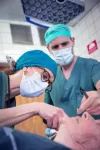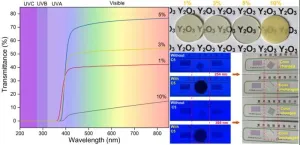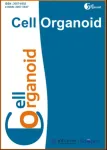Algorithm helps doctors identify more aggressive types of basal cell carcinoma
2024-07-30
(Press-News.org)
An algorithm can help healthcare professionals recognize which patients have a highly aggressive form of basal cell carcinoma (BCC) of the face. These are the findings of a study conducted at the University of Gothenburg. If more BCCs are correctly identified as high-risk, the patients can directly receive the most effective treatment.
BCC is the most common form of skin cancer. The cancer type grows slowly and almost never spreads to other parts of the body. Most of the BCCs all are cured, but without treatment, highly aggressive forms can grow infiltratively and cause significant morbidity for affected patients. It is a growing cancer type, with 70,000 new cases confirmed in Sweden in 2021.
The most obvious signs
The study includes clinical as well as dermoscopic images obtained at the Department of Dermatology and Venereology at Sahlgrenska University Hospital. Images of nearly 300 patients with confirmed facial BCC were analyzed. These images were then reviewed by six independent experienced dermatologists who were asked to interpret the observed clinical and dermoscopic findings in each case. These findings were subsequently used as the basis for the development of a clinical algorithm that serves to discriminate between low and more aggressive types of BCC.
The study pinpointed that the BCCs with a bumpy surface had a strong association with high-risk subtype of BCC. Moreover, poorly defined borders, and presence of a lighter area (often called “white porcelain area”) were also associated with this high-risk subtype. Small blood vessels in the ulceration were also found to be characteristic of an aggressive form, which was not previously known.
The study shows that the clinical algorithm identifies most cases of high-risk BCC. The algorithm also showed a high positive predictive value, i.e., when it flags a BCC as high-risk, it is usually right.
The best treatment
The first author of the study, Hannah Ceder, is a PhD student at the University of Gothenburg and a specialist physician at the Department of Dermatology and Venereology at Sahlgrenska University Hospital. She is also one of the surgeons in the country who performs the surgical method that has been shown to be clearly superior for high-risk BCCs. The surgical method is called Mohs micrographic surgery, which allows for complete examination of all tissue margins guaranteeing complete removal, while sparing as much healthy tissue as possible. While the patient is under local anesthesia on the operating table, pathologists analyze the tissue samples to be absolutely sure that the entire tumor is gone, before closing the surgical wound.
“Mohs micrographic surgery gives us full control of the margins, while preserving healthy tissue. We have shown in a previous study that in patients with highly aggressive BCC of the nose, traditional surgery fails to remove the entire tumor in over half of the cases,” says Hannah Ceder.
Distinguishing the tumors
In other surgeries, there is a risk that the surgery will have to be repeated because the pathologist will find residual tumor in the tumor margin.
“It is desirable to develop simple preoperative methods that help doctors in identifying these high-risk tumors. Therefore, our clinical algorithm is relevant and important. This would make it easier to determine which tumors can be easily removed with traditional surgery without a prior biopsy, and which ones require further investigation to screen out the cases that require Mohs micrographic surgery,” says Hannah Ceder. However, it is important to revalidate the clinical algorithm in a prospective setting to investigate its usefulness in a real-world clinical setting.
END
[Attachments] See images for this press release:


ELSE PRESS RELEASES FROM THIS DATE:
2024-07-30
Three out of five youth who died by suicide in the U.S. did not have a prior mental health diagnosis, signaling missed opportunities to identify children and adolescents for suicide prevention strategies, including therapy or medications to treat depression. This finding comes from an analysis of over 40,000 suicides by youth of 10-24 years of age from 2010 to 2021, recorded in the Centers for Disease Control and Prevention National Violent Death Reporting System. Results were published in the journal JAMA Network Open.
“We discovered that certain youth who died by suicide were less likely to have a documented ...
2024-07-30
WASHINGTON, July 30, 2024 – It has never been easier to spread false or misleading information online. The anonymous, impersonal nature of the internet, combined with advanced tools like artificial intelligence, makes it trivial for bad actors to manipulate the truth and challenging for everyone else to separate reality from fiction. In this modern climate of disinformation, understanding how falsehoods and rumors spread is crucial for combating them.
In AIP Advances, by AIP Publishing, researchers from Shandong Normal University developed a new type of rumor propagation model, taking inspiration from nuclear reactions. Their model can provide fresh insights ...
2024-07-30
About The Study: The findings of this study revealed a significant increase in the suicide rate among U.S. preteens between the 2001-2007 and 2008-2022 periods. Results showing a disproportionate increase in female suicide rates relative to male expand on existing evidence depicting a narrowing of the historically large gap in youth suicide rates between sexes. Suicide was the 11th leading cause of death in female preteens between 2001 and 2007 and the 5th leading cause of death between 2008 and 2022, while suicide in male preteens ...
2024-07-30
About The Study: In this cross-sectional study, 3 of 5 youth suicide decedents did not have a documented preceding mental health diagnosis; the odds of having a mental health diagnosis were lower among racially and ethnically minoritized youths than white youths and among firearm suicides compared with other mechanisms. These findings underscore the need for equitable identification of mental health needs and universal lethal means counseling as strategies to prevent youth suicide.
Corresponding author: To contact the corresponding author, Sofia Chaudhary, M.D., email sofia.s.chaudhary@emory.edu.
To access the embargoed study: Visit our For The Media website ...
2024-07-30
About The Study: In this serial nationally representative survey study, increased self-managed abortion (SMA) was observed following the loss of federal abortion protections. The findings revealed increased SMA use among marginalized groups, most often with ineffective methods. These findings suggest the need to expand access to alternative models of safe and effective abortion care and ensure those seeking health care post-SMA do not face legal risks.
Corresponding author: To contact the corresponding author, Lauren Ralph, Ph.D., email lauren.ralph@ucsf.edu.
To access the ...
2024-07-30
Researchers at the National Institutes of Health (NIH) found that rates of preteen suicide (ages 8-12) have been increasing by approximately 8% annually since 2008. These increases were most pronounced among female preteens, American Indian/Alaska Native or Asian/Pacific Islander preteens, and Hispanic preteens. While the overall number of preteen suicides is small compared to teen and adult populations, the researchers say the findings from this analysis underscore the need for age-appropriate and culturally responsive prevention efforts that include suicide risk screening ...
2024-07-30
URBANA, Ill. — Nanozymes are tiny, engineered substances that mimic the catalytic properties of natural enzymes, and they serve a variety of purposes in biomedicine, chemical engineering, and environmental applications. They are typically made from inorganic materials, including metal-based elements, which makes them unsuitable for many purposes due to their toxicity and high production costs.
Organic-based nanozymes partially overcome some of these problems and have the potential for a broader range of applications, including food and agriculture, but they are still in the early stages of development. A new paper from the University of Illinois Urbana-Champaign ...
2024-07-30
Ultraviolet (UV) radiation can break most of the chemical bonds in organic matter, and prolonged exposure to ultraviolet light can cause significant harm to humans and objects. In response, UV-shielding materials have been developed to fulfill various commercial requirements, including UV-shielding windows, food containers, contact lenses, and masks. While existing UV shielding materials are suitable for daily use, their effectiveness diminishes in high-temperature, high-pressure, corrosive, and radioactive environments. Organics fail at high temperatures, and films or coatings tend to flake under harsh conditions; glass is constrained ...
2024-07-30
Organoid technology began with Professor Hans Clevers' 2009 breakthrough in cultivating the first intestinal organoid from mice. Since then, the field has expanded exponentially, showcasing organoids' remarkable capabilities in replicating human organ physiology and pathology. Organoids, which are three-dimensional stem cell cultures, offer powerful tools for studying organ development, modeling diseases, and facilitating drug discovery. Their ability to maintain genetic diversity and mimic complex biological processes makes them invaluable in biomedical ...
2024-07-30
WASHINGTON—The Endocrine Society, the world’s oldest and largest organization of scientists devoted to hormone research and physicians who care for people with hormone-related conditions, announced it is merging with the Association of Program Directors in Endocrinology, Diabetes and Metabolism (APDEM).
APDEM represents the academic leaders of more than 135 training programs that prepare fellows for clinical and research careers in endocrinology and metabolism.
“The Endocrine Society and APDEM share a commitment to ...
LAST 30 PRESS RELEASES:
[Press-News.org] Algorithm helps doctors identify more aggressive types of basal cell carcinoma





